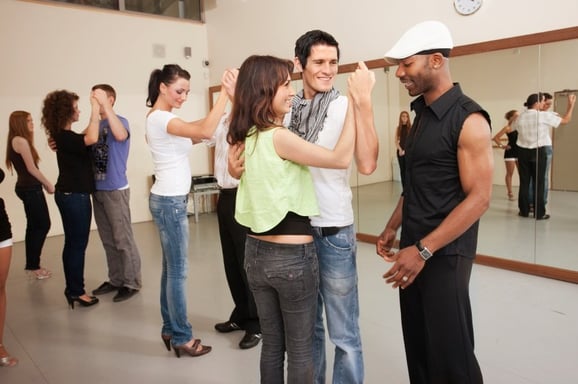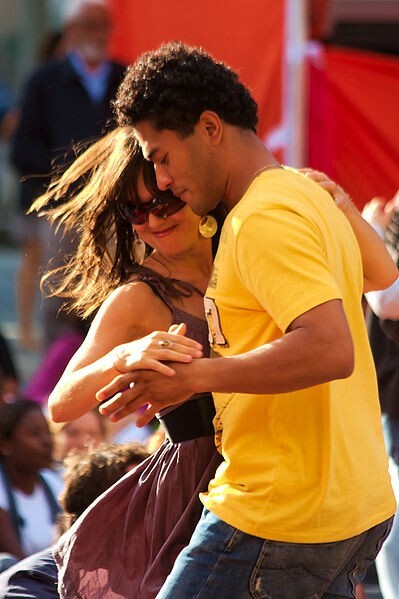
Fear is overrated. We know that because time and time again its catastrophes don’t come to pass. The plane doesn’t crash, and the odds of that happening are infinitesimal. We get up to dance, and the whole room doesn’t break into laughter. Everyone else is too caught up in their own anxieties to notice you.
The track record of fear is absurdly bad. We would fire anyone whose predictions were as consistently wrong as the fantasies and false beliefs in our head. At the minimum, we wouldn’t pay attention to their yammerings anymore.
BORN TO WORRY
Unfortunately, we are outfitted with a brain prone to imagine worst-case scenarios, and the one thing it’s better at than that is nagging about its various dreads. We are born to be worrywarts, and that default has worked to the extent we are still around on the planet. Yet unless we know how to manage this default and separate out the bogus from the real threats, we wind up being played by our hyper-tuned amygdalas to the tune of missing out on the whole point of being here: engagement with our life.
It turns out that what our brains really want is not to stew all day and night about things that don’t exist in a tense we are not in but novelty and challenge, as brain scientist Gregory Berns has pointed out. Our mandate is to participate in our experience and do things that the fear police don’t want us to do.
It’s one of the great, or maybe not so great, paradoxes of the human condition. In your brain every day the forces of safety and comfort are hard at work trying to squelch your craving for growth, otherwise known as progress. The security default seems like the way to go, but it’s completely at odds with the progress you need to be happy.
The source of gratification, the science tells us, are core psychological needs that express fear-busting aspirations such as autonomy and competence. We need to feel like we are writing our own script. To do that, we have to step beyond the comfort zone and fear’s flashing red lights. Not acting on the core needs leads to stagnation, boredom and vital life sources sealed off from our reach. You might be safe, but you’re sorry, because you are not moving forward.
REFLEXIVE FANTASIES
When a perceived risk appears in our consciousness, the primal impulse in the defense hub of the amygdala reflexively triggers the danger signal. Enter catastrophic thoughts of what might happen if you do something outside the bubble. You’ll be a wimp if you speak up about the stress or health issues you have. Other people would judge you a failure at pottery or painting. You might get mugged if you travel to another country. There’s no end to what the amygdala can concoct to keep you in a box.
We buy into these false alarms, because the thoughts are in our head. If we’re thinking them, they must be true. No! Thoughts aren’t real. Only experience is. Fear is a projected anxiety, a figment of imagination that shuts down opportunities for growth, aliveness, and meaning. Who’s in charge here? You or an automatic thought that’s as accurate as “the earth is flat.”
There is no progress without risk, so giving our brain neurons the novelty and challenge they want means not being able to predict what will happen when you take a leap. That’s okay, since the fear equipment has a horrible track record in the prophecy department too. Fear is even more inept when it comes to decision-making. No good choice is ever made from the desperation and panic of fear.
Most fears that dominate our days fall into the social realm. The projected anxieties boil down into the dread of others’ disapproval. Since humans are not born with the cues of how to behave like Arctic terns, we look to see what the majority is doing and try to do that, but that’s a bad yardstick when it comes to satisfying your core needs—since no one can do that for you. We have to look to our own affinities and what is meaningful to us to gratify our self-determination equipment.
THE VISE-GRIP OF SOCIAL FEAR
Fear of looking foolish is one of the top blocks to learning and progress for adults. We had no problem jumping in to try things as kids, but adults are supposed to know everything already and sweat not appearing omniscient. Yet foolishness is merely the state of not-knowing on the way to skill and knowledge. It is the act of learning, in other words. Fools have more fun, which is why kids have more fun. They don’t feel foolish when they jump into something new; learning is their job. It’s our job too, if we want to keep our brain neurons happy.
A young man approached me after I delivered a recent keynote address on empowerment for the staff of Pasadena City College. He wanted to thank me for the talk. In it, I had sketched out a couple of fear scenarios, which hit home for him. “I was at a club and a girl asked me to dance, but I said No, because I’m shy. I really regret it. I won’t be doing that again,” he said with a big smile. He was more in charge of his thoughts now, not the other way around.
Fear is momentary. Regret is forever. Breaking out of the clutches of the fear factory in our heads means stepping into the non-life threatening fears in our life. “Do the thing you fear the most, and the death of fear is certain,” Mark Twain said.
What keeps fear activated is avoidance. We don’t want to go there with fear, so we step around it or try to ignore it, but it actually becomes the guiding hand in the form of aversion. We don’t realize that under all social fear is one not-so-big deal, a belief we wouldn’t be able to handle it. Guess what? We always handle it. The belief is bogus.
A JOURNEY OF SECONDS
Ditching the paralysis of fear means noticing the butterflies in the stomach and moving anyway. A few seconds of dripping armpits is worth it, because on the other side is exhilaration, competence, skills, autonomy, new friends and opportunities, and the victory of having overcome an impediment to your potential. It’s a journey of mere seconds through the self-imposed barricades that keep out the life we want.
For many, the fear that holds progress back is the fear of making a mistake, again an external approval metric. Even philharmonic musicians dread messing up and playing a wrong note. The answer for those with performance anxiety is the same as it is for anyone wanting to do something that pushes their envelope in some way—understanding that non-life-threatening mistakes are survivable, human. Be okay with mistakes. It’s the fear of mistakes that causes them, as our attention is diverted from the task at hand to thoughts of dread and what might happen.
The more you step through irrational and catastrophic thoughtsto engage with your life, the more you strengthen competence and mastery needs, which cut down on the security reflex. Studies show that people whose self-worth is based on intrinsic goals—acting for the sake of it, for no external reward—are much less in the defensive posture.
The more we push past fear thresholds, the more we see that calamity is not around every corner. We are emboldened to embrace the new and unknown, and brain neurons applaud with a celebration of dopamine, their party drug.
The world of play is particularly good as a place to confront fears, because it’s a no-judgment realm where nothing is on the line except fun and enjoyment. If you want to make the safety equipment cringe and your challenge need celebrate, jump into a new hobby. Learn how to make a ceramic pot, play saxophone, or dance mambo. When you do, you’ll see how easy it is to take on the next challenge and do what a part of your brain said you couldn’t.
If you would like to manage fears and the stress response that creates many of them, click below for details on our empowerment and stress management training programs and coaching.






